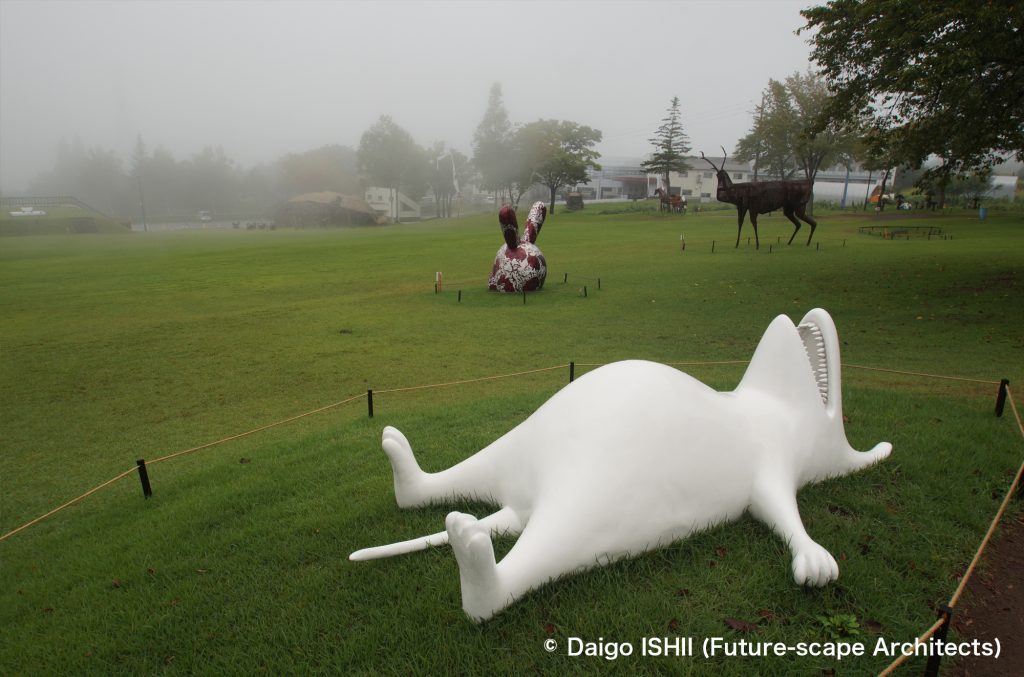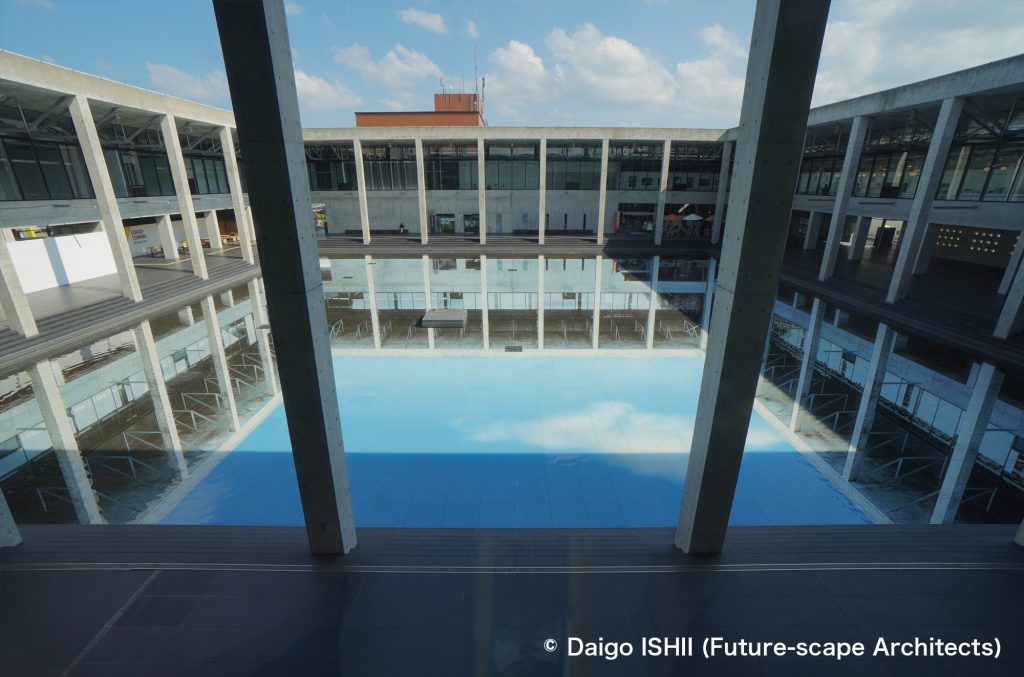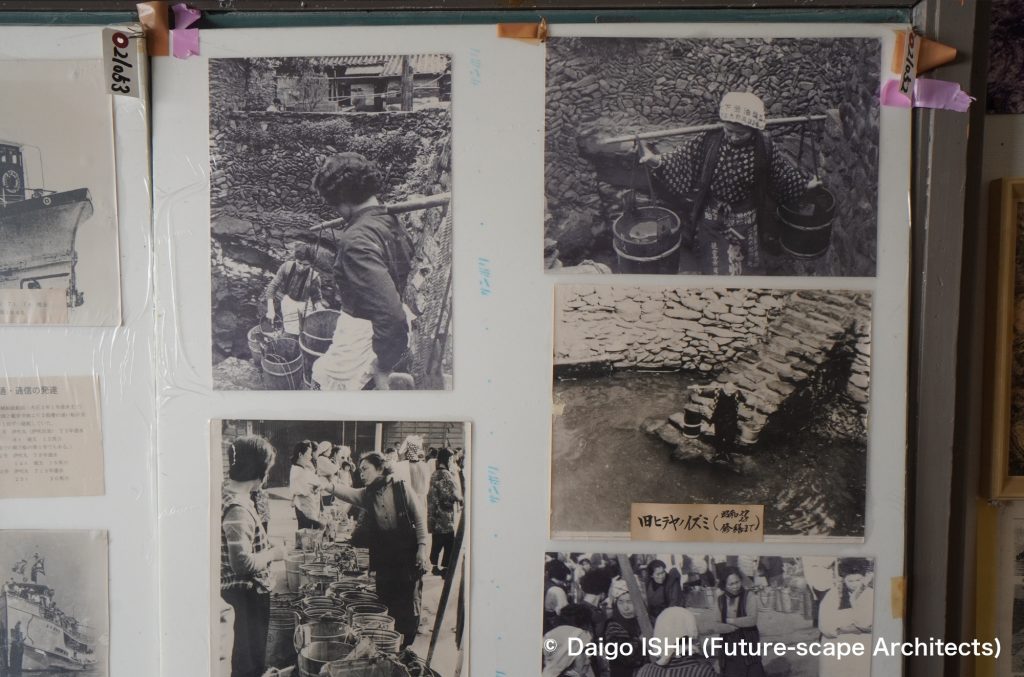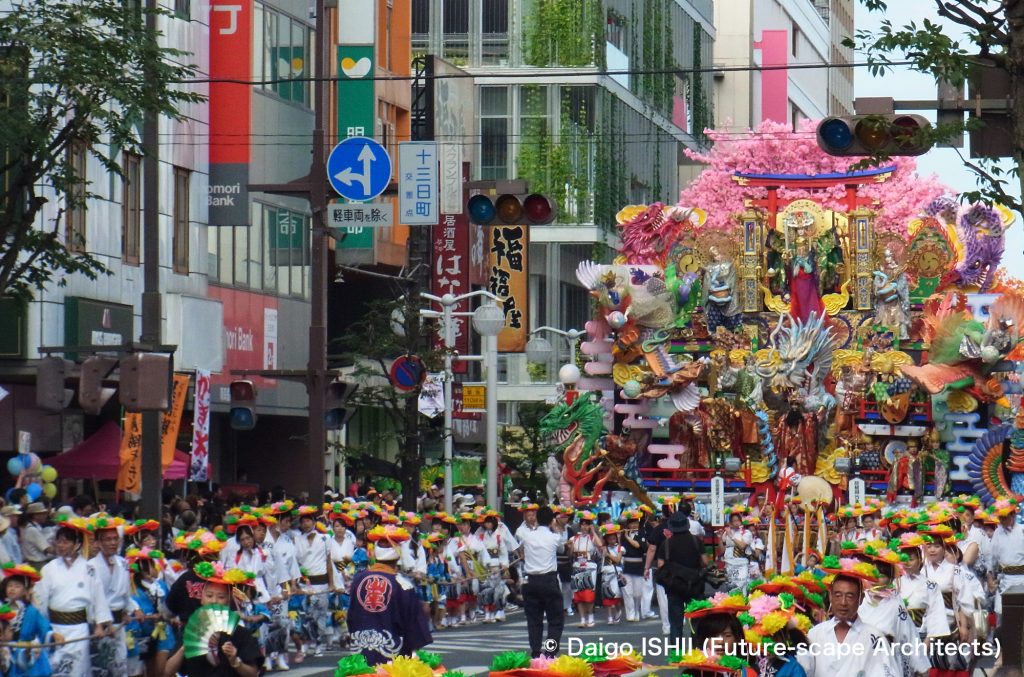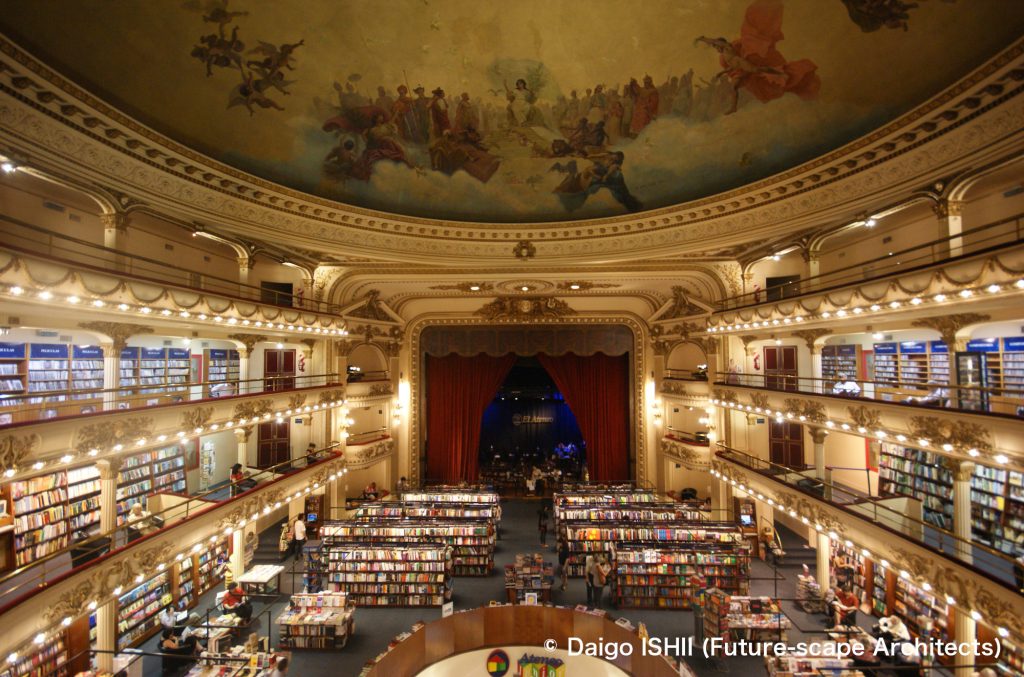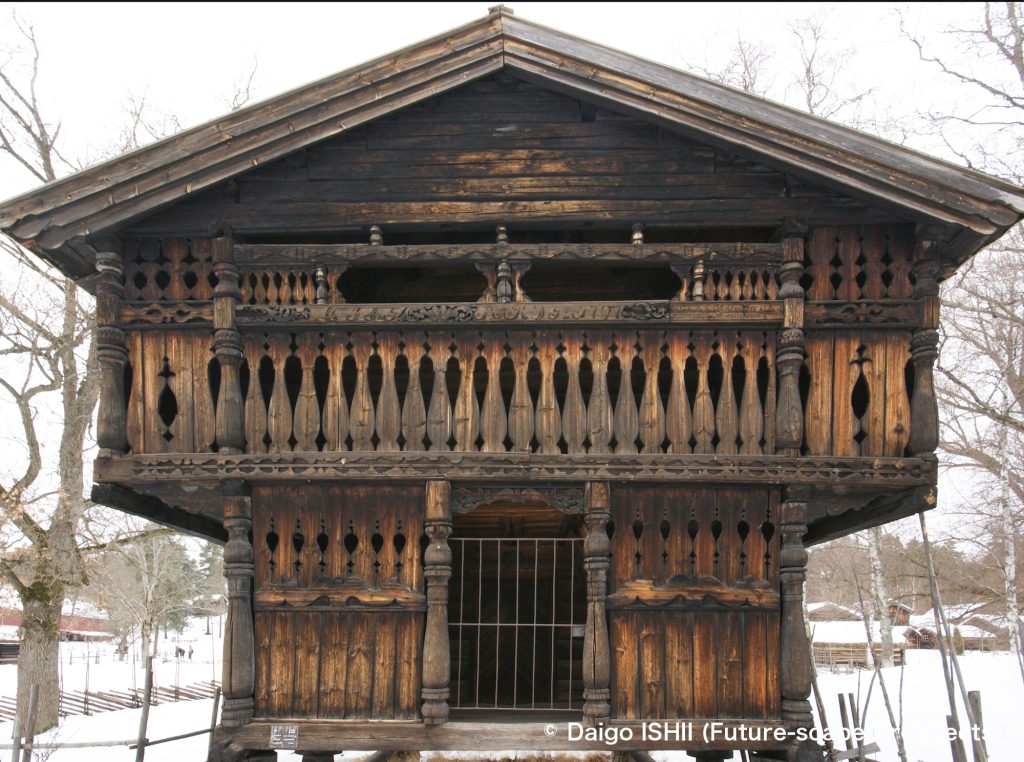祭事・行事は、コミュニティーのもっとも栄えていた時代の記憶であり記録。500人を割った伊吹島の人口からすると、過大に見える祭事・行事の数々も、かつて4000人が住み、漁業の売上が最高40億円あった島の、もっとも勢いがあった時代を語り伝えるもの。
Traditional events are memories and records of the community's most prosperous times. The population of Ibukijima is less than 500 people now, so the number of festivals may seem excessive. However, they tell the most energetic era of the island, when 4,000 people lived there, and fishery sales were up to 4 billion yen.

October : At the Chosa, the Taikodai of the float goes down the steep slope of the village.
旧暦の2月1日に行われ、春の到来を告げるのが「百手祭り」。江戸時代からの記録があり、厄年の男性と中学生が弓を射って、五穀豊穣や大漁を祈願します。春が進み、旧暦の3月21日になると、伊吹島独自の行事「島四国」の日。島の88体のお地蔵様を四国八十八ヶ所に見立てて、一回りすると、八十八ヶ所を回ったと同じ御利益があるというもの。特筆すべきは、参詣者への島民のお接待。弘法大師を祀る大師堂や、十数軒ある網元の加工場では、参詣者を、お菓子やパン、飲み物のお接待で歓待します。八十八ケ所詣りの四国本土と同じく、伊吹島にも参詣者を温かく迎える伝統が息づいています。
いりこ漁の解禁を前に、島には徳島から木偶回し(でこまわし)が訪れ、各網元が祀る、漁の神、木偶のヨベッサンとリョースケサンの人形を動かして、大漁を祈願します。そして、梅雨を迎えた6月、集落中央の伊吹八幡神社には茅の輪くぐりが用意され、昼と夜に、本土から招いた讃岐里神楽の太夫が神楽を奉納します。一部の演目は、すごい切れで、コンテンポラリーダンスと見紛うほどの舞。行事の締めは、神職が、豆腐と豆腐を載せたかわらけを箸でつついて壊し、ハレからケにリセットするという「モドシカグラ」。かなり凶暴な所作がすごい。
夏の盛り、いりこ漁たけなわの時期に行うのが、大漁を祈願する荒神様の祭り「港祭り」。社に祀る大きな恵比寿様(ヨベッサン)を外に出し、氏子とともに、大漁旗を掲げた船団に乗り込みます。まず、港の沖で3回転して、お社にお参りした後、近くの小島に詣で、船上で宴会。氏子が代わる代わる酒を掛け続けるので、恵比寿様はすっかり酒焼け。帰路、島の2箇所の別の恵比寿様の前で3回転し、港に戻りますが、その際、船に乗る人と、陸で見守る人がタオルを振り合い、タオルを介して、温かくつながって行きます。
そして秋は、四国では、香川から愛媛の新居浜あたりの海沿いで盛んな「ちょうさ」の季節。太鼓台と呼ばれる山車は3台で、本土に比べると少ないものの、江戸時代に遡り、歴史では香川県有数。本土の海沿いのちょうさとの違いは、1トン超えの太鼓台を巡行する経路の高低差と海上渡御。ちょうさのクライマックスは、太鼓台を腕を伸ばして持ち上げるかき比べ。関東の神輿でもおなじみですが、重量ははるかに超えているから、威勢がいい。
本土からは小さく見える瀬戸内海の島々ですが、実は、それぞれが、伊吹島のように、さまざまな祭事・行事に彩られた豊かな世界を築いていたに違いありません。課題は、人口が減少する中、どうやって維持して行くかということ、そして、生業の漁業における男女の役割分担が、祭事・行事にも映し出されているということ。
The Momote Matsuri Festival held on February 1st of the lunar calendar heralds the arrival of spring. It has a record from the 18 century, where men in unlucky years and junior high school students shoot bows to pray for a bountiful harvest and a big catch. March 21st of the lunar calendar is the day of the Shima-Shikoku (Shikoku in the island), an event unique to Ibuki Island. The 88 stone buddhist statues on the island are likened to the pilgrimage of the 88 temples in Shikoku (Shikoku Hatijyuhachikasyo). If pilgrims go around them, they will receive the same benefits as visiting the 88 temples. Worthy of mention is the hospitality of the islanders to the pilgrims. Islanders welcome pilgrims with sweets, bread, and drinks at the temple, where Kobo Daishi, the grate buddhism teacher, is enshrined, and more than a dozen Fishermen's boss's processing factories. The tradition of welcoming pilgrims warmly lives on in Ibukijima, just like on the Shikoku mainland, where the 88 Temples pilgrimage takes place.
Before lifting the ban on Japanese anchovy fishery, the Dekomawashi Wooden Doll Performance from Tokushima prefecture is taken place to pray for a big catch by moving two dolls of Yobessan and Ryosukesan, the deities of fishing enshrined by each fishermen boss house. Then, in June, when the rainy season arrives, the Chinowa Kuguri (passing through a hoop made of plants of the sedge family) is installed at the Ibuki Hachiman Shrine in the center of the village, and Tayus (dancer) of the Sanuki Sato Kagura (sacred dance), whom islanders invite from the mainland, dedicate Kagura dance during the day and night. Some of the performances are so sharp that they can look contemporary dance. The event concludes with the Modoshikagura performance, in which the priest pokes a tofu (soybean curd) and an unglazed earthenware and breaks them with chopsticks to reset the time from the special day to the normal day. Quite ferocious behavior is unbelievable.
At the height of summer, when Japanese anchovy fishery is at their peak, the Minato Matsuri Festival is held to pray for a big catch. The shrine parishioners put the big Ebisu-sama (deity of wealth) statue in the shrine outside. They and the statue board a fleet of ships with big catch flags. First, the fleet make three turns in the harbor to pray the shrine, then they visit a nearby small islands and have a party on board. Since parishioners keep pouring sake liquor in turn, the Ebisu-sama becomes drink-reddened face with sake. On the way back, the fleet also make three turns in front of two different shrines that enshrine Ebisu-sama statue on the island before returning to the port. At that time, the people, who board the ship, and the people, who watch on land, wave towels to each other, and warm interaction through the towels generates.
Autumn is the season for the Chosa, which flourishes along the coast from Kagawa prefecture to Niihama in Ehime prefecture, Shikoku. Three floats called Taikodai parade. Even if the number is fewer than on the mainland, they go back to the 18th century and are the most prestigious floats in Kagawa Prefecture. The characteristic different from the mainland is the difference in elevation of the route on which the Taikodai floats, weighing more than 1 ton, parade, and the transfer of the portable shrine on the sea. The Chosa's climax is a contest where bearers stretch their arms and lift the Taikodai float. This contest is also familiar with the portable shrines in the Tokyo metropolitan area, but the Taikodai float is much heavier, so it is energetic.
The islands of the Seto Inland Sea look small from the mainland. However, each island must have built a rich world colored by various traditional events like Ibukijima island. The issues are how to maintain traditional events while the population is declining, and how to change the division of roles between men and women in the fishing industry, which is reflected in traditional events.
旧暦の2月1日 : 百手祭り / February 1 of the lunar calendar : Momote Matsuri Festival
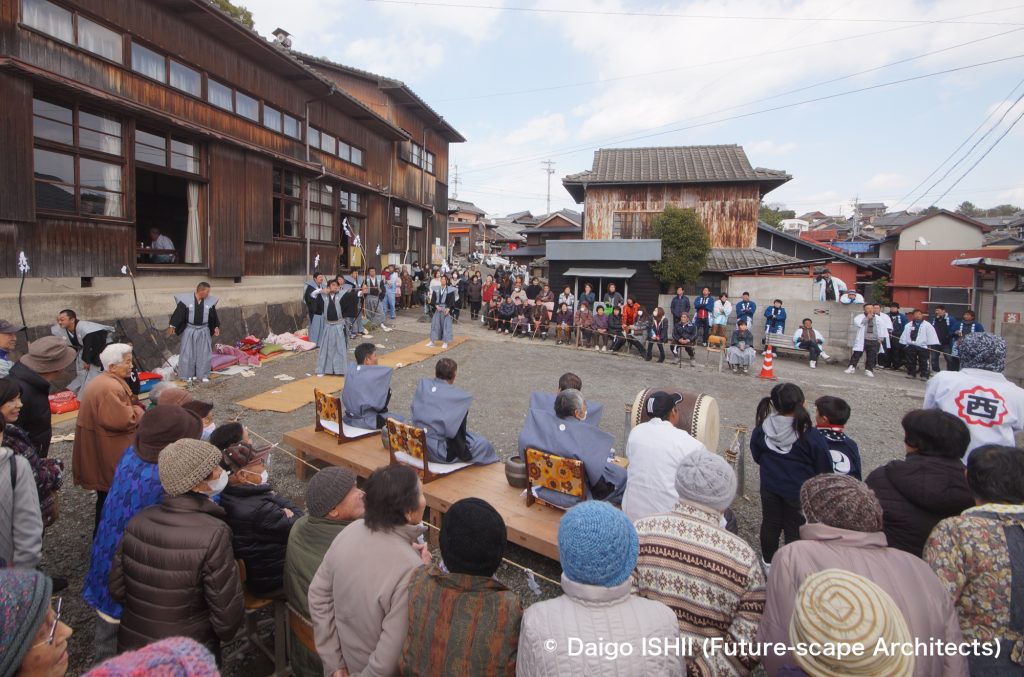
February 1 of the lunar calendar : At the Momote Matsuri Festival, archers shoot bows.

February 1 of the lunar calendar : At the Momote Matsuri Festival, an archer shoots bows.

February 1 of the lunar calendar : A fishermen's boss, who was a minor top favorite, hit the target and won the prize.
February 1 of the lunar calendar : The Momote Matsuri Festival.
February 1 of the lunar calendar : The Momote Matsuri Festival.
4月 : 先生のお見送り / April : Send-off Event for teachers
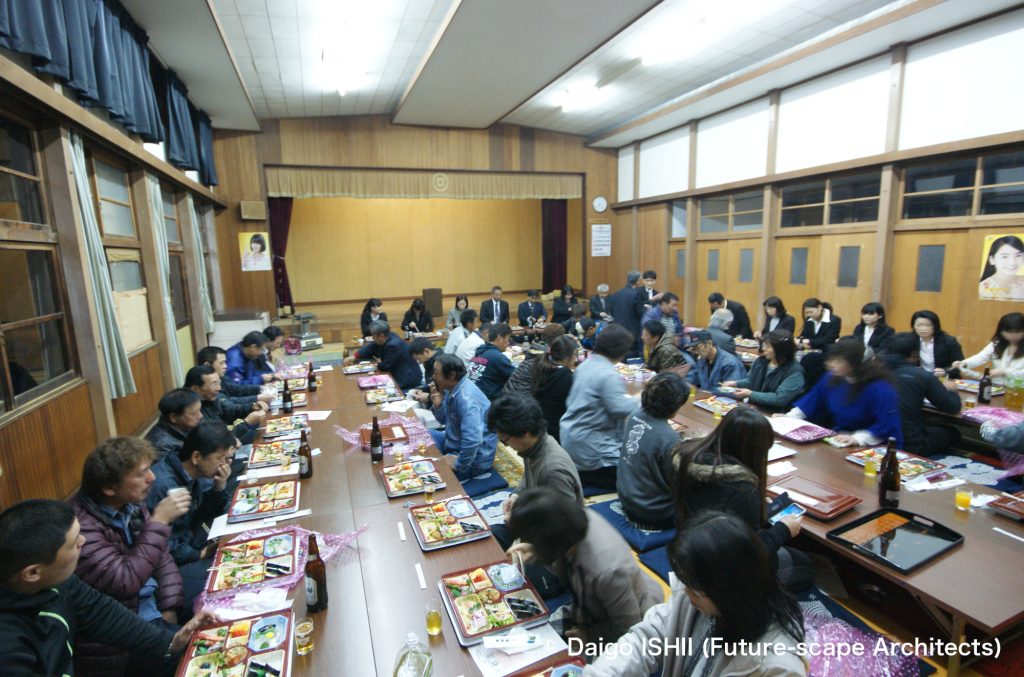
April : At the end of the school year, a farewell party is held for the teacher who is leaving the island.

April : In the morning after the farewell party after drinking all night, the students and islanders send the teachers off with paper tape.
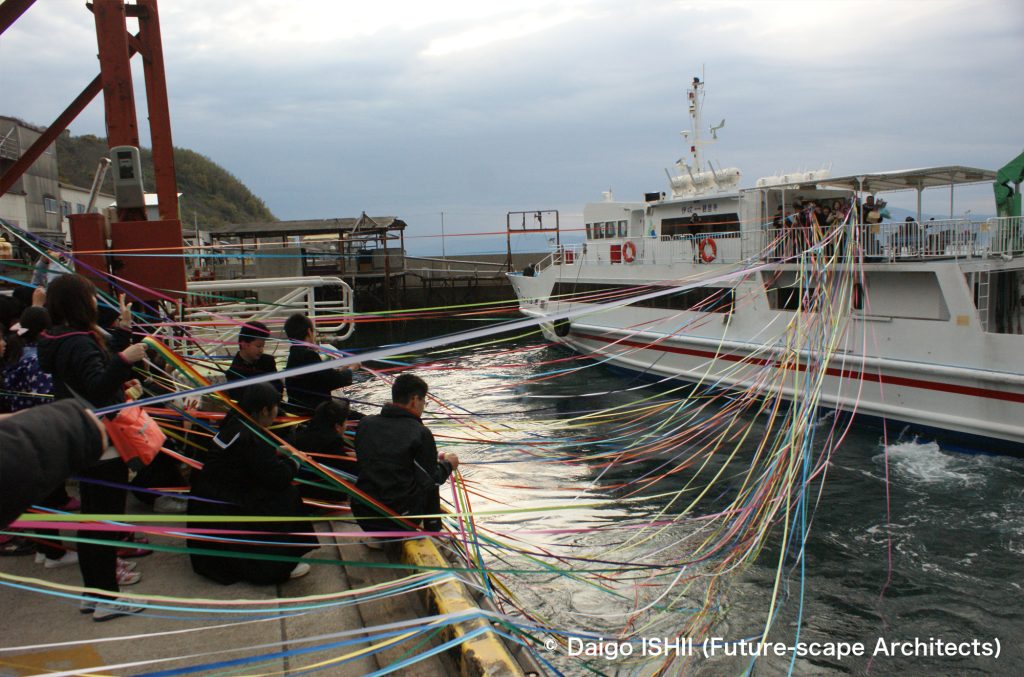
April : In the morning after the farewell party after drinking all night, the students and islanders send the teachers off with paper tape.
April : Send the teachers off in the spring.
旧暦の3月21日 : 島四国 / March 23 of the lunar calendar : Shimashikoku

March 23 of the lunar calendar : At the Shimashikoku, new red aprons are hung on the statue of the guardian deities of children lined up by the road, and an islander prepares sweets to give pilgrims.
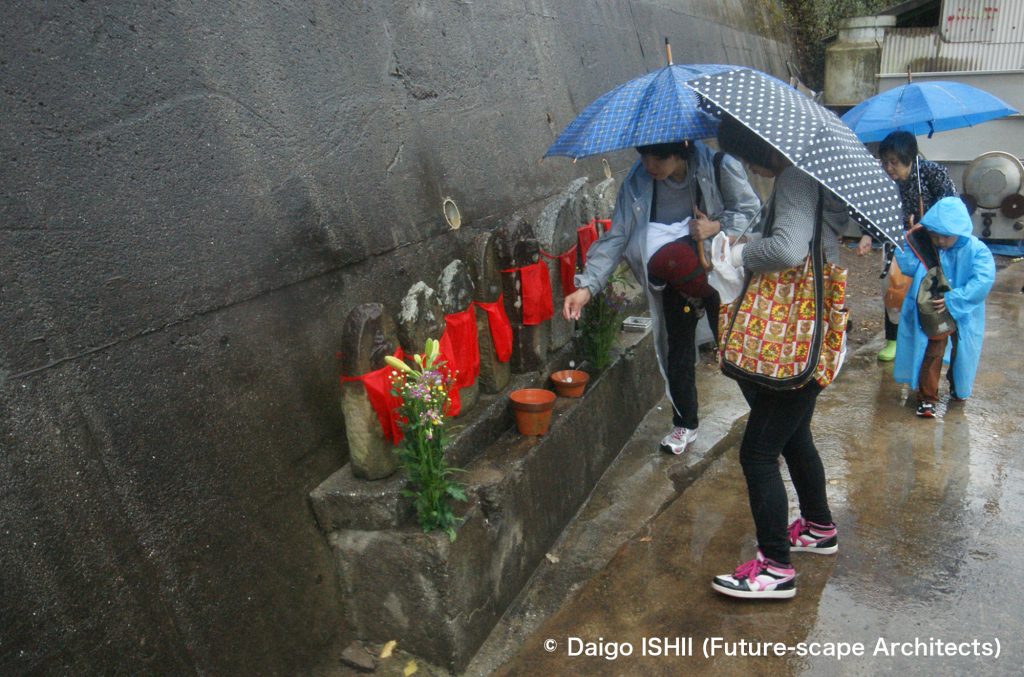
March 23 of the lunar calendar : At the Shima Shikoku, pilgrims donate money to the statues of guardian deities of children.
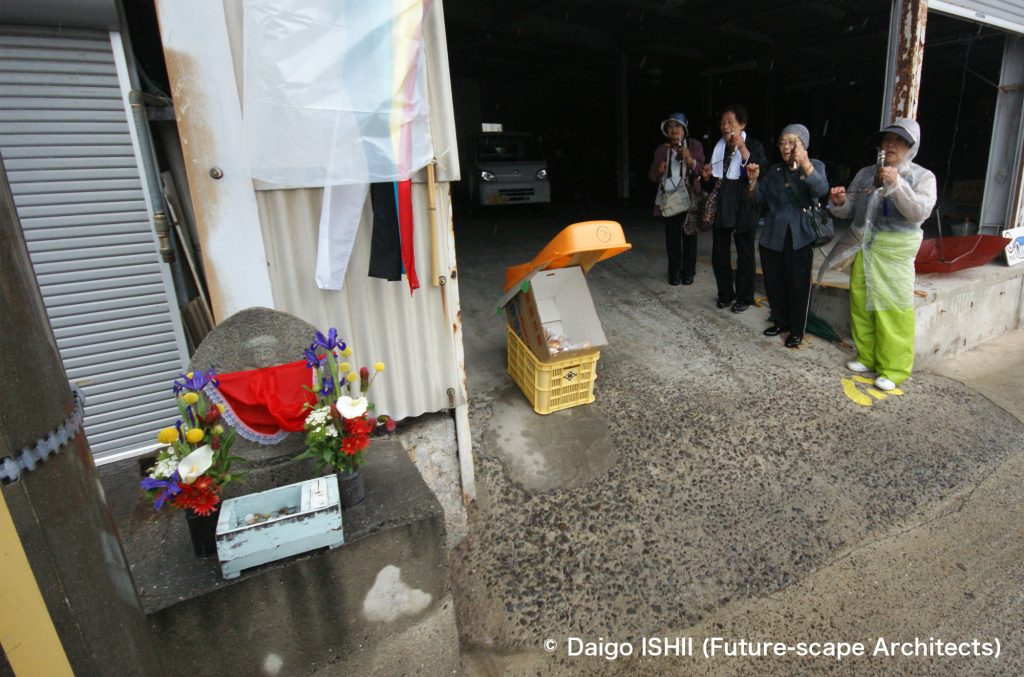
March 23 of the lunar calendar : At the Shima Shikoku, pilgrims ring a bell and recites sutras next to a statue of guardian deities of children.
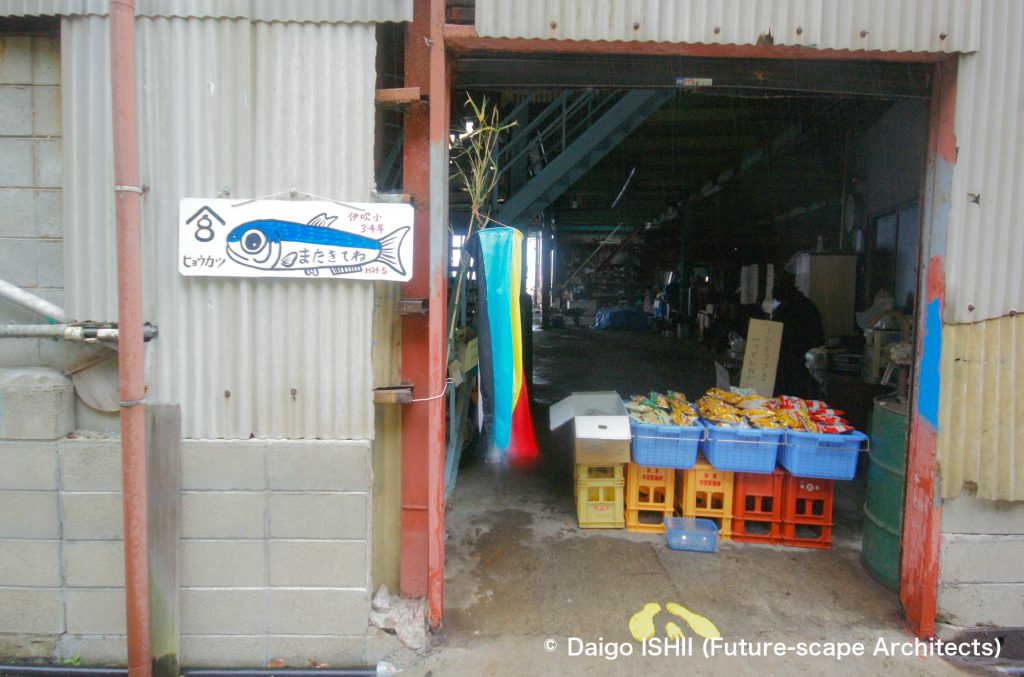
March 23 of the lunar calendar : At the Shima Shikoku, a fishermen's boss offers sweets and drinks to show hospitality to pilgrims at the entrance of the dried Japanese anchovy processing factory.
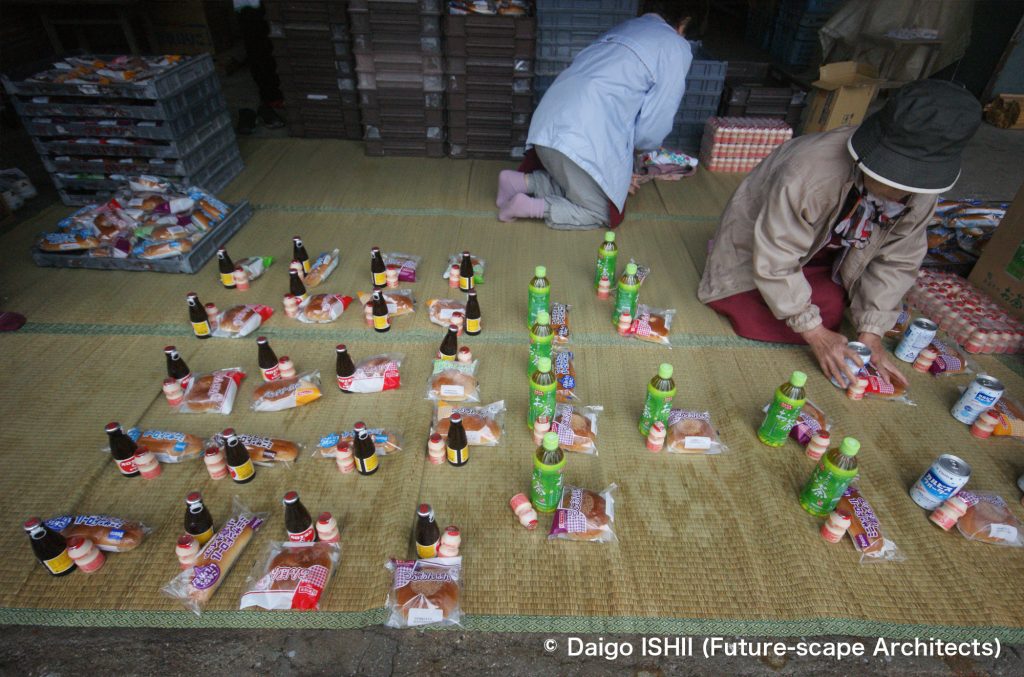
March 23 of the lunar calendar : At the Shima Shikoku, islanders arrange sweets and drinks to show hospitality to pilgrims inside the dried Japanese anchovy processing factory.
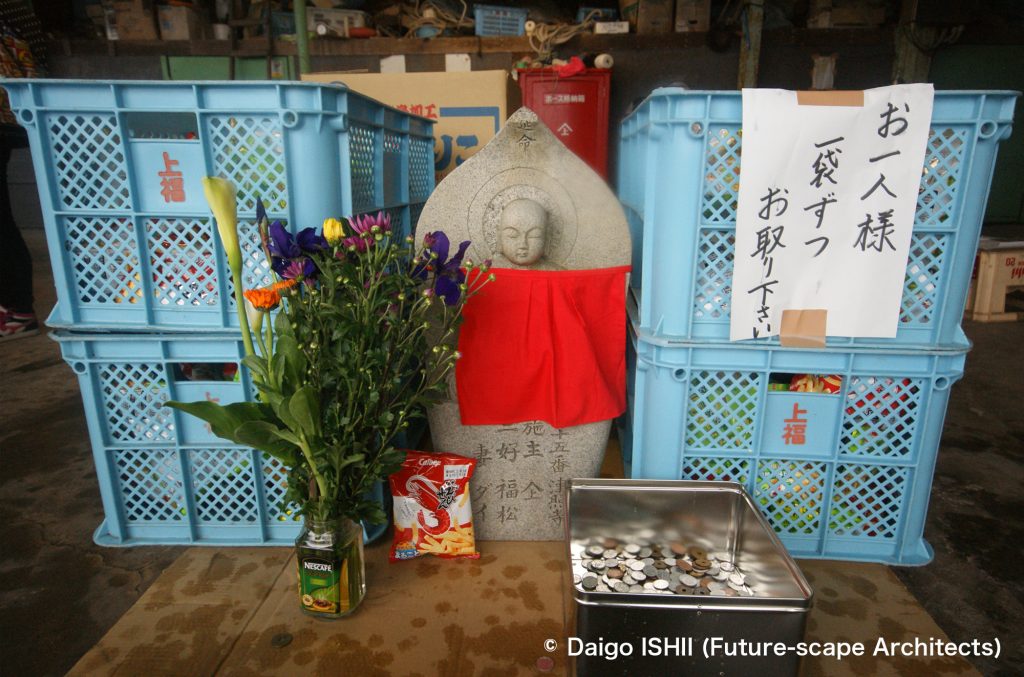
March 23 of the lunar calendar : At the Shima Shikoku, sweets and drinks to show hospitality wait for pilgrims on both side of a statue of guardian deities of children in the dried Japanese anchovy processing factory. The poster writes that each person should take one bag at a time.
6月 : 木偶回し / June : Dekomawashi Wooden Doll Performance
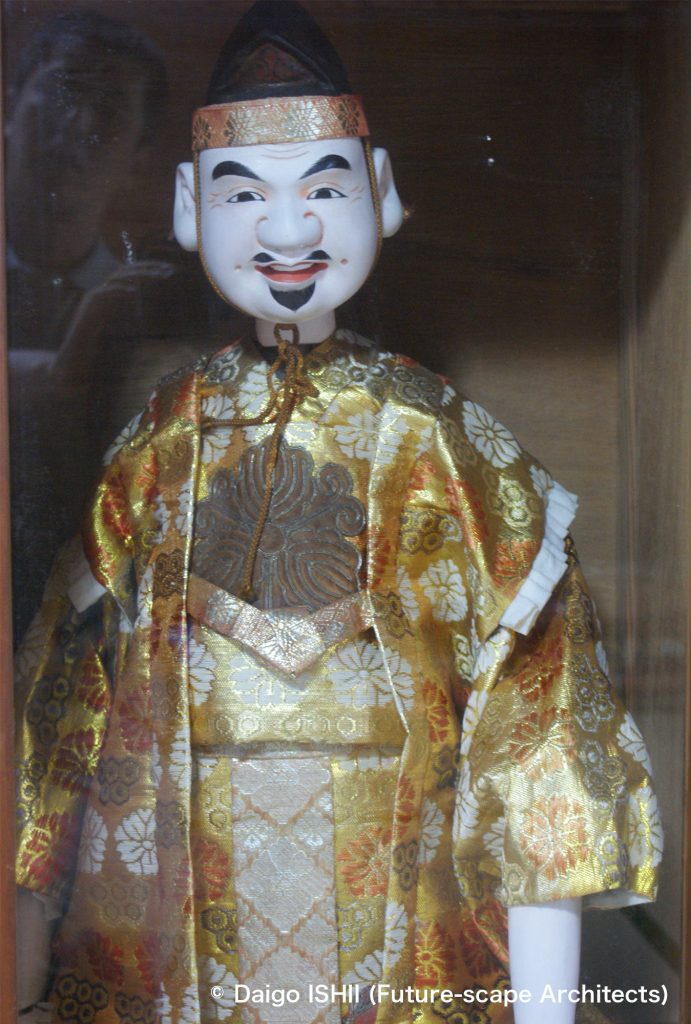
June : See a wooden doll decorated at a fishermen's boss's residence. The Dekomawashi Wooden Doll Performer from Tokushima prefecture manipulates the doll.

June : See wooden dolls of the deities of fishing, Yobessan and Ryosukesan, exhibited at Seto Inland Sea Museum of History and Folklore.
6月 : 神楽 / June : Kagura (sacred dance)

June : See the Chinowa Kuguri (passing through a hoop made of plants of the sedge family) taken place at the Ibuki Hachiman Shrine before the performance of the Kagura (sacred dance).
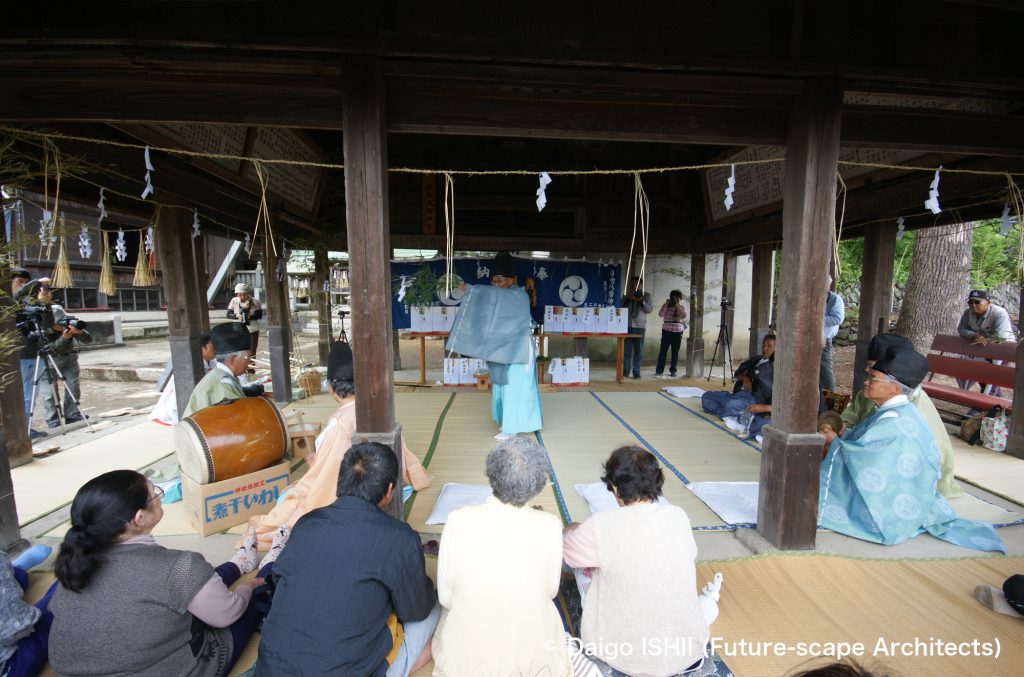
June : See the performance of the Kagura (sacred dance) taken place in the precinct of the Ibuki Hachiman Shrine in the daytime. It's fun to see the improvisational dialogue between the Tayus, like a comic act.
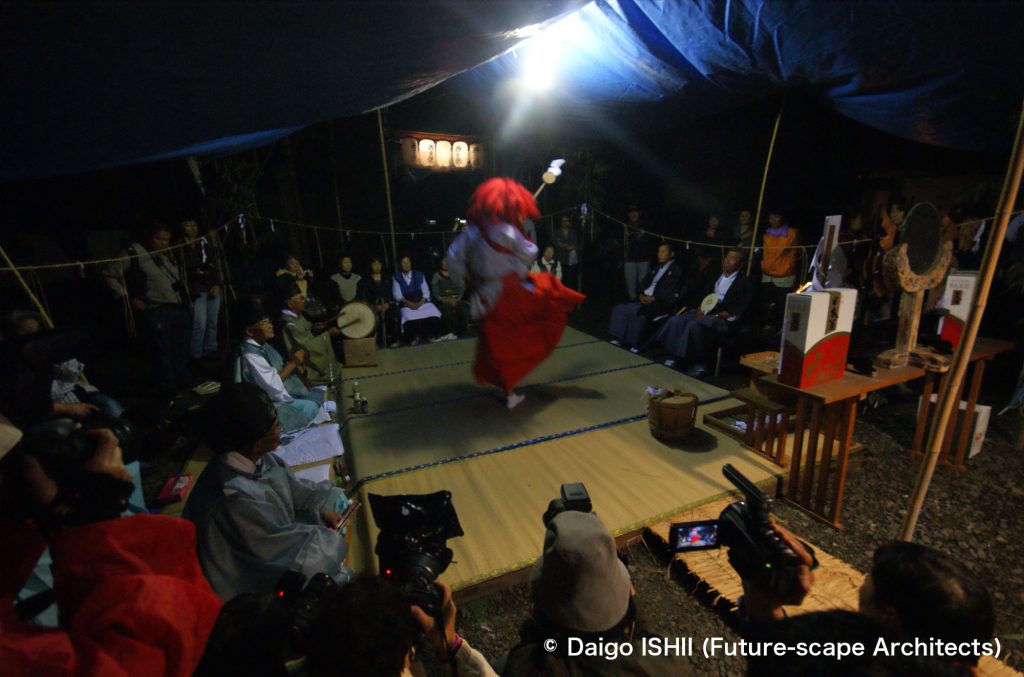
June : See the performance of the Kagura (sacred dance) taken place in front of the small temple in the night. He performs an astonishing dance like contemporary dance.
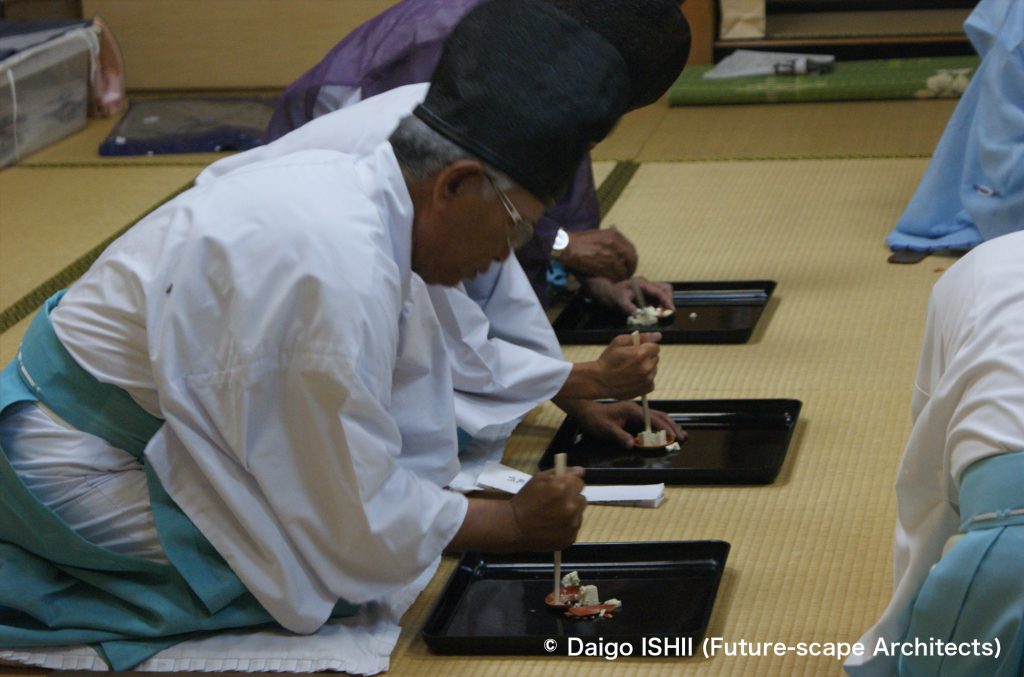
June : See the Modoshikagura that the priests take place after the Kagura (sacred dance) to reset time. They break an unglazed earthenware with wooden chopsticks.
7月 : 港祭り / July : Minato Matsuri Festival

July : At the Minato Matsuri Festival, the shrine parishioners put the big Ebisu-sama (deity of wealth) statue in the shrine outside and parade to board a fleet of ships.

July : At the Minato Matsuri Festival, a fleet of ships, on which the Ebisu-sama (deity of wealth) statue is put, departs to the sea.
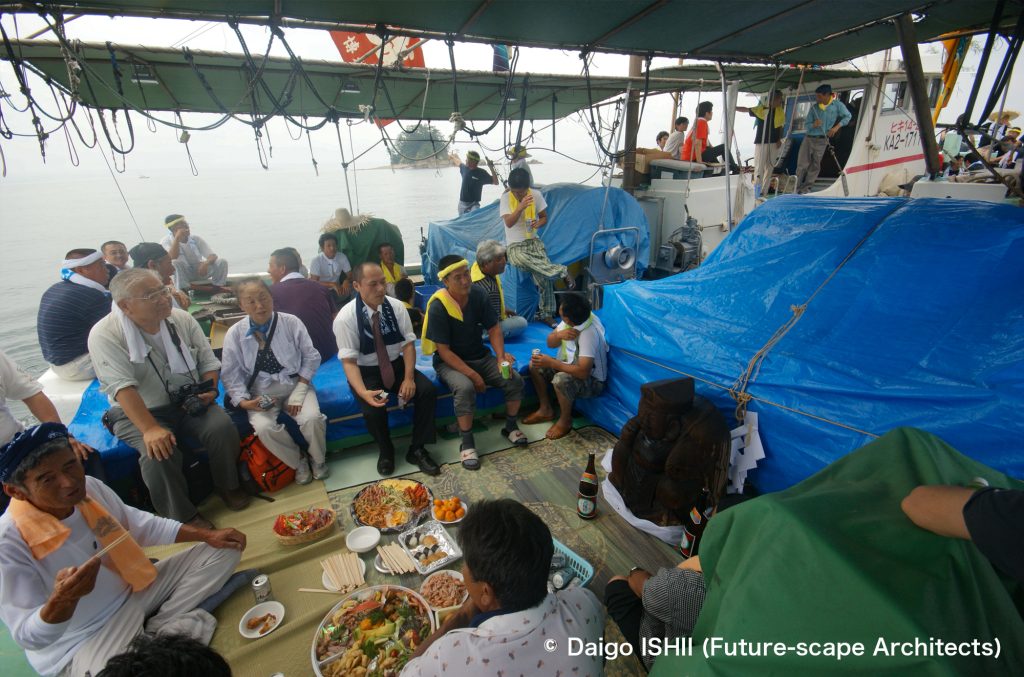
July : On the board of ships, which sail on the sea at the Minato Matsuri Festival, a party is held, and the Ebisu-sama statue is completely black with the sake liquor that everyone has poured.
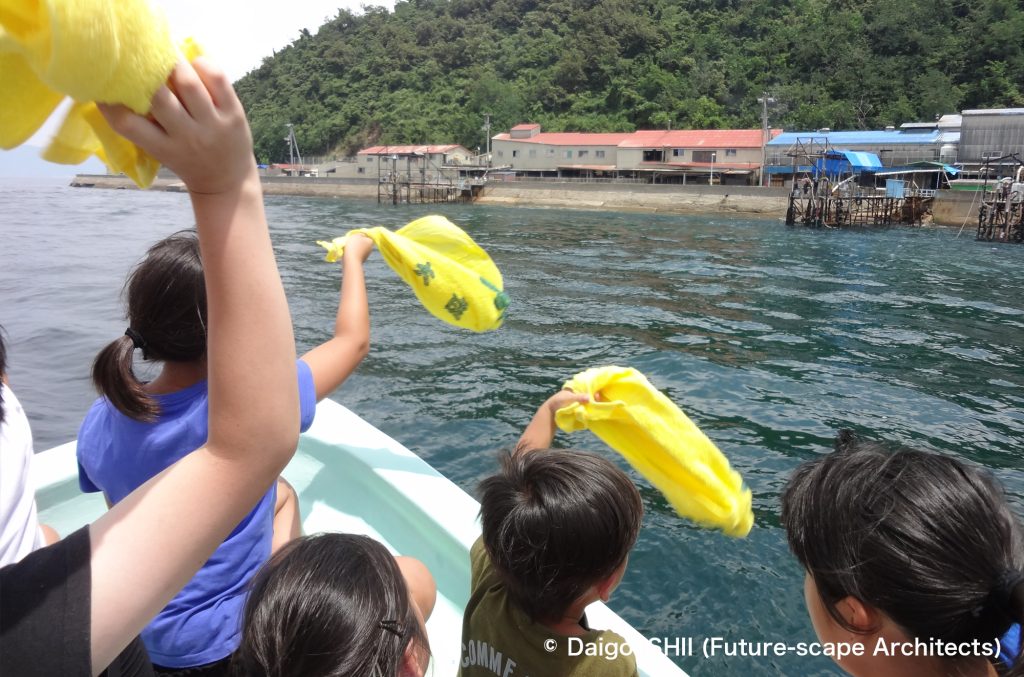
July : At the Minato Matsuri Festival, the people, who board the ship, and the people, who watch on land, wave towels to each other.
8月 : 地蔵盆 / August : Jizo-bon Festival
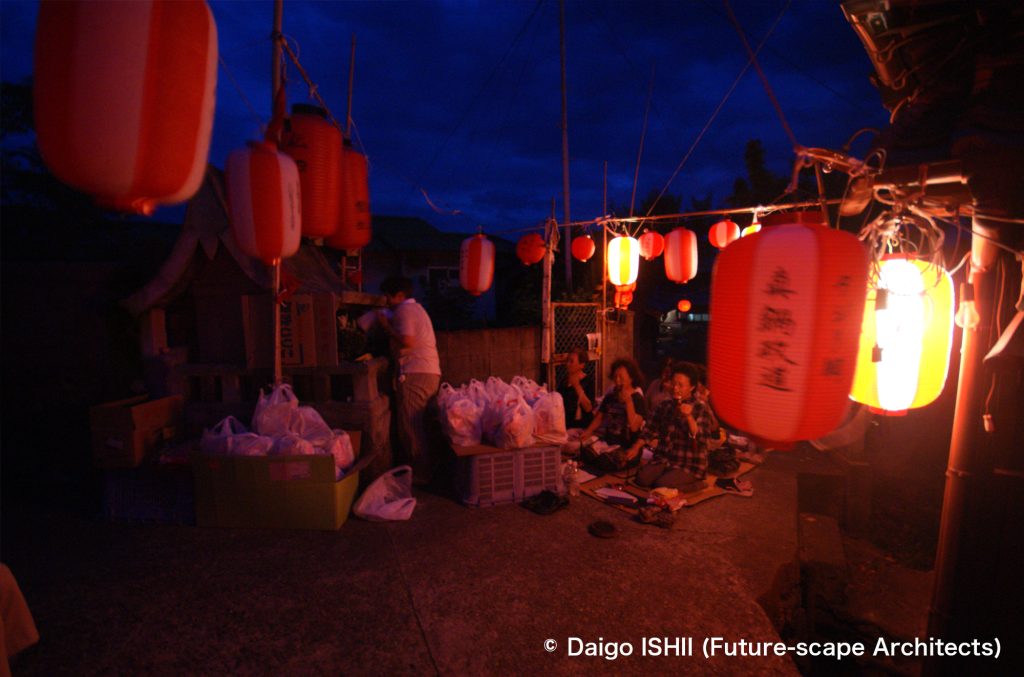
August : At the Jizo-bon Festival, islanders ring a bell and recites sutras to a statue of guardian deities of children.
10月 : ちょうさ / October : Chosa

October : At the Chosa, one of the Taikodais of the float is exhibited. The characteristic of the Taikodai is that the futon mats are stacked on top of the roof in an inverted pyramid shape.
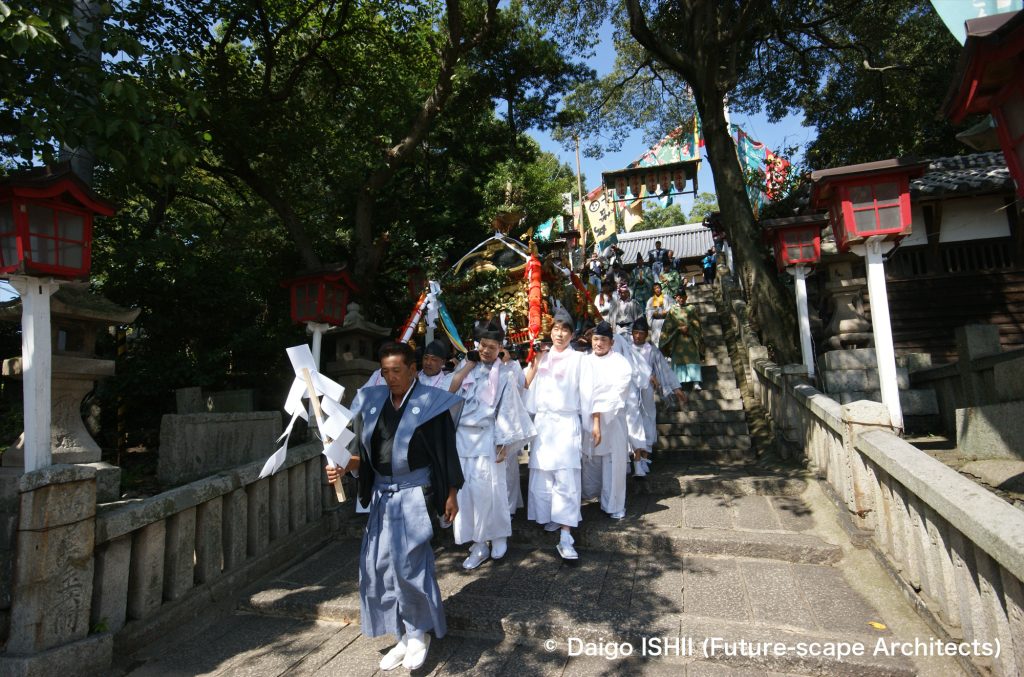
October : At the Chosa, a mikoshi (portable shrine) is taken out from the Ibuki Hachiman Shrine and goes down the stone steps toward the port.
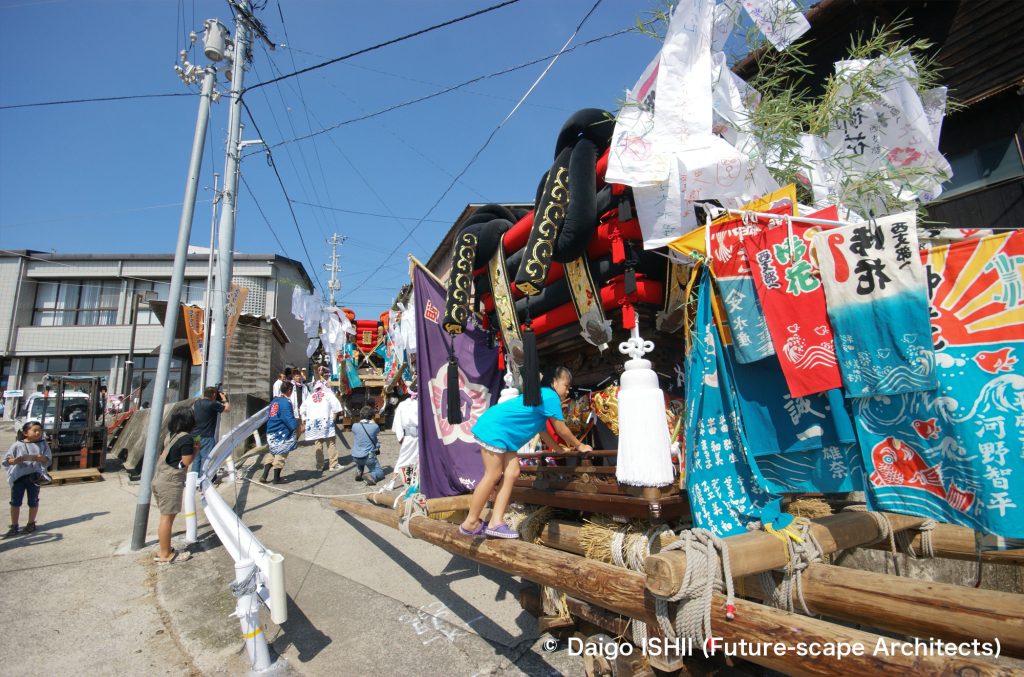
October : At the Chosa, the Taikodais go down a steep slope toward the port.
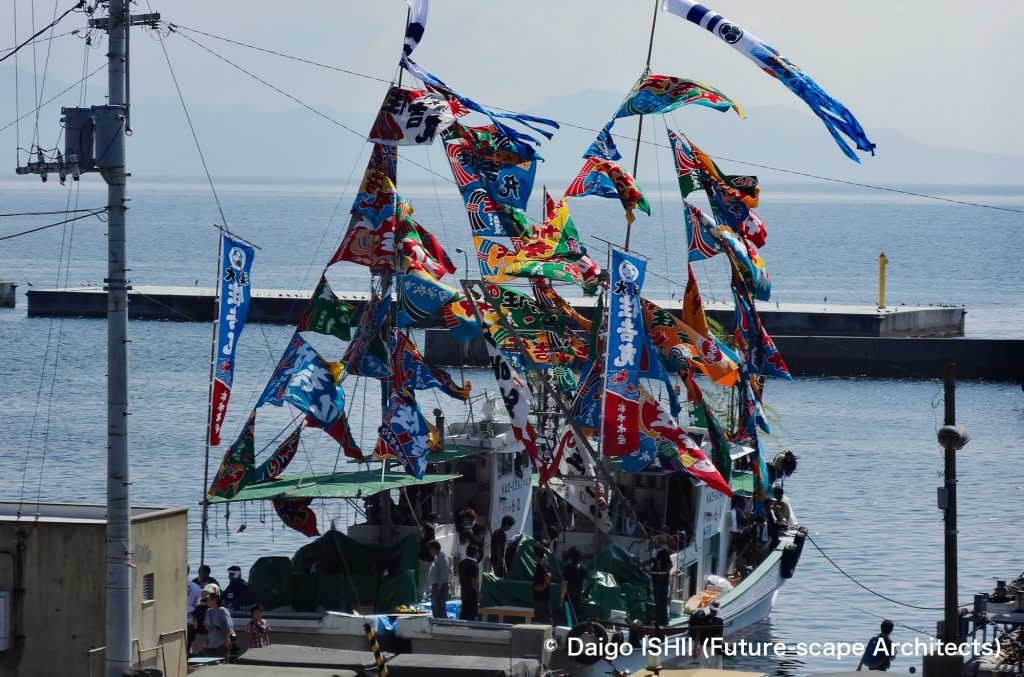
October : See the ships to transfer the portable shrine on the sea at the Chosa. The two ships are combined and decorated with a big fishing flag.
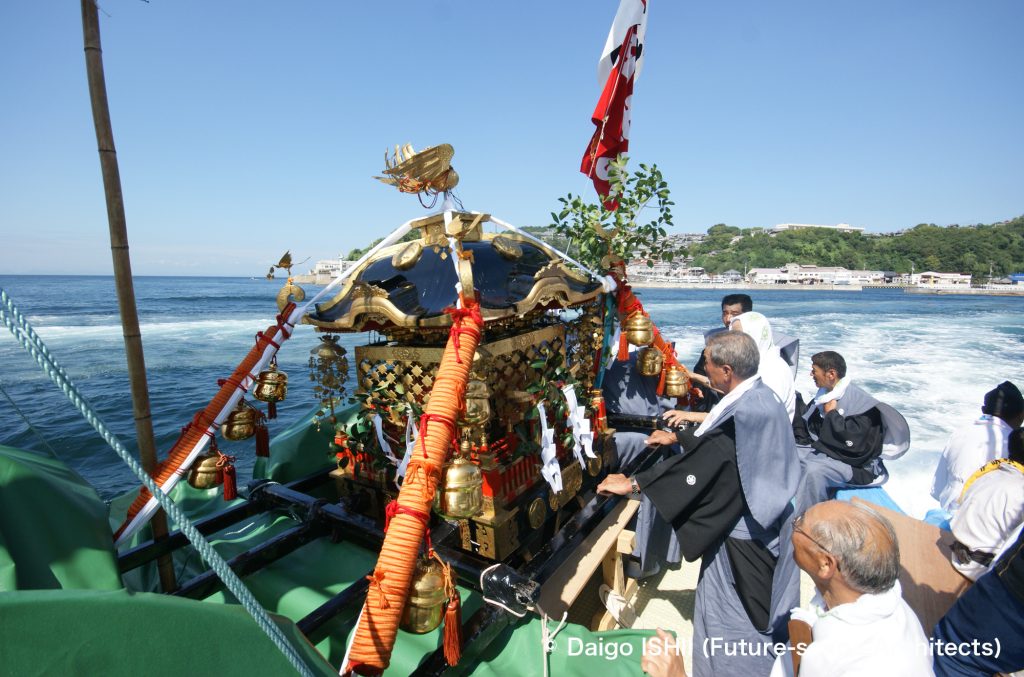
October : See the portable shrine transferred on the sea at the Chosa.
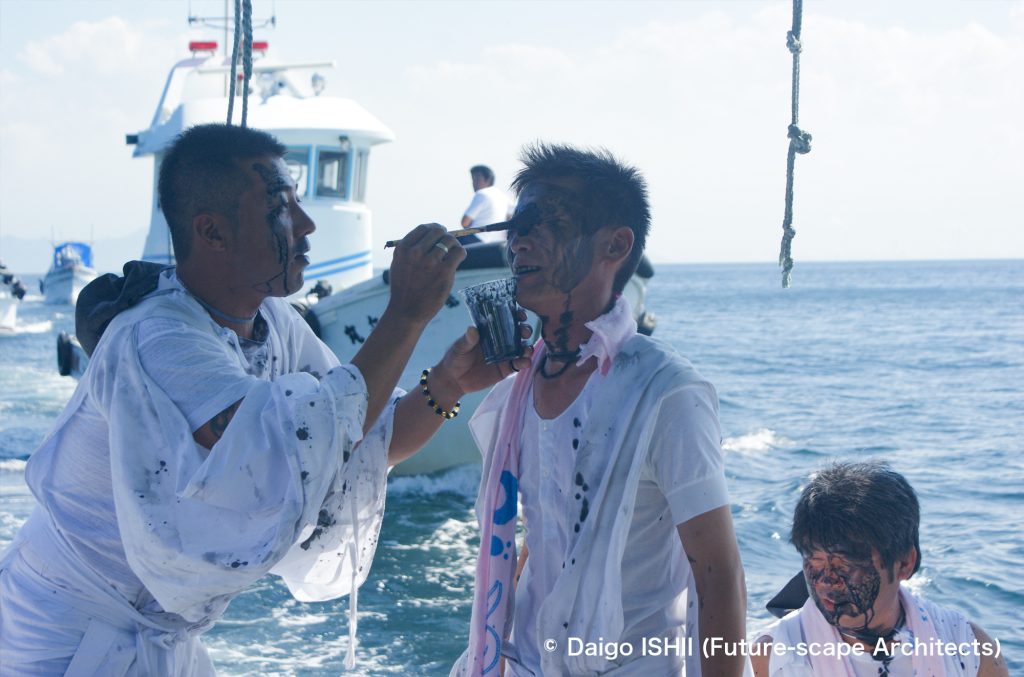
October : On the board of the ships to transfer the portable shrine on the sea at the Chosa, the parishioners mutually paint their faces with Japanese ink.
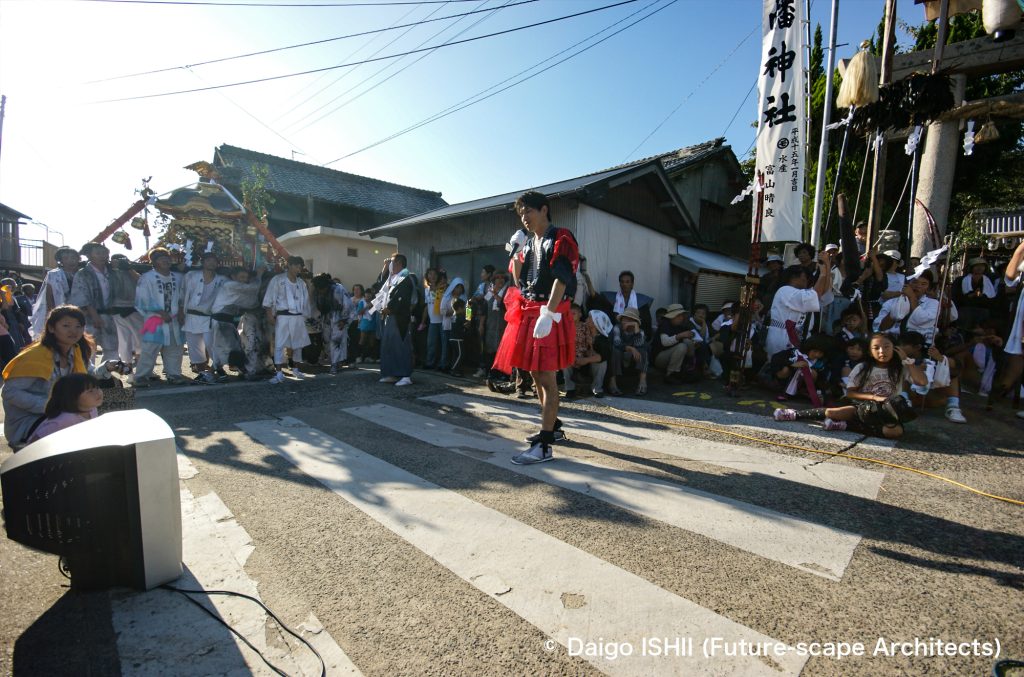
October : See the way back to the shrine from the port after the portable shrine transferred on the sea at the Chosa. The parishioners of unlucky age show different tricks along the way, so the portable shrine is slow to move forward.
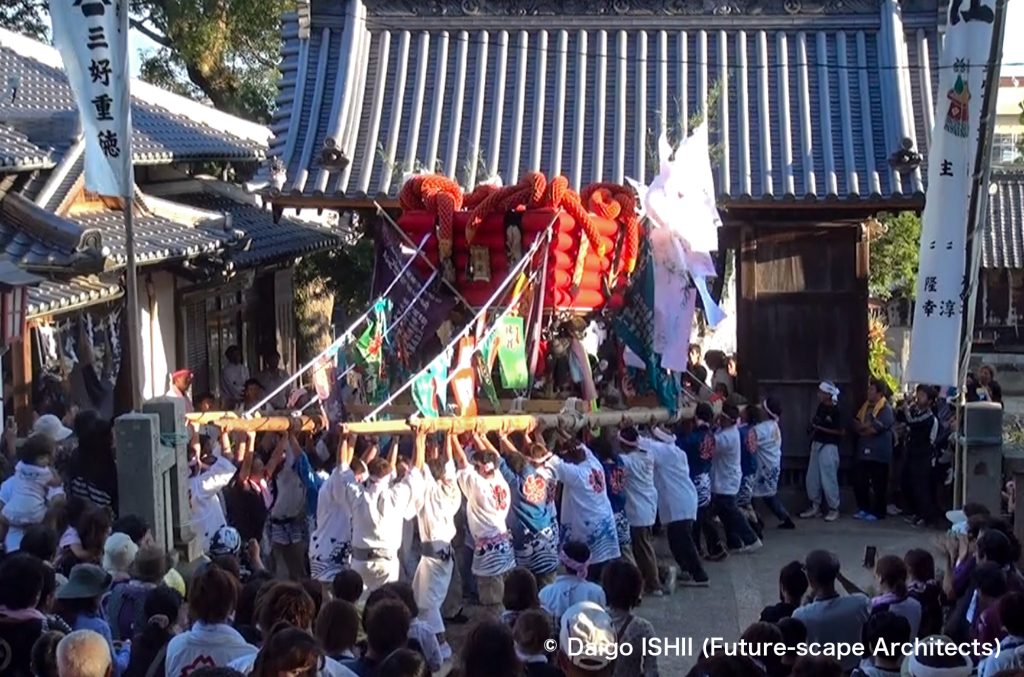
October : See the contest where bearers stretch their arms and lift the Taikodai float taken place in the precinct of the shrine.
ご感想はこちらへ / Click here for your impressions
もっと詳しく → トイレの家を伊吹島で - 伊吹島とはこんなところ 百手祭
もっと詳しく → トイレの家を伊吹島で - 伊吹島とはこんなところ 春の別れ-1
もっと詳しく → トイレの家を伊吹島で - 伊吹島とはこんなところ 春の別れ-2
もっと詳しく → トイレの家を伊吹島で - 伊吹島とはこんなところ 島四国
もっと詳しく → トイレの家を伊吹島で - 伊吹島とはこんなところ 神楽
もっと詳しく → トイレの家を伊吹島で - 伊吹島とはこんなところ 港祭り
もっと詳しく → トイレの家を伊吹島で - 伊吹島とはこんなところ 地蔵盆
参考文献 / reference
"伊吹島の民俗 : 香川県観音寺市伊吹町 : 特集号"(香川民俗学会,1991)
伊吹島民俗資料館
瀬戸内歴史民俗資料館
写真の無断使用、転用はご遠慮下さい。/ Please do not use or upload our photos without permission.
